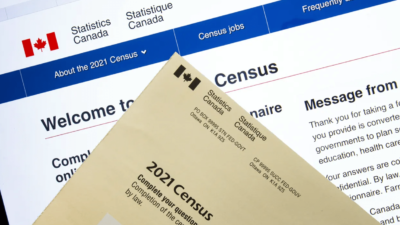LMI 101
Labour market information can be confusing due to its complexity, constantly changing nature and use of varying terminology. Our LMI 101 feature is designed to help demystify labour market information for users.
What is Labour Market Information?
Labour market information refers to data, analysis, and insights about the current and future state of the job market. It includes information on employment trends, wages and salaries, job openings, skills demand, education and training requirements, and other factors that influence the supply and demand of labour.
Labour market information can be obtained from various sources, including government reports, surveys, job postings, and industry reports. This information is used by employers, job seekers, policymakers, and other stakeholders to make informed decisions about hiring, training, education, and workforce development.
For employers, labour market information can help them understand the supply of available talent, identify skills gaps, and adjust their recruitment strategies accordingly. For job seekers, labour market information can help them identify job opportunities, assess the demand for their skills, and plan their career paths.
In summary, labour market information plays a crucial role in shaping the job market by providing insights into the supply and demand of labour, and helping stakeholders make informed decisions about workforce development and management.
Types and examples of labour market information can be found in the table below.
| Type of Information | Examples |
|---|---|
| Employment statistics | Number of employed, unemployed, and underemployed people in a particular region, industry, or occupation. |
| Job vacancies and demand | Number of job openings, projected job growth, and skills needed for occupations in demand. |
| Education and training | Number of people with specific levels of education or training, availability of training programs, and skills required for specific jobs. |
| Earnings and income | Average and median wages and salaries by occupation, industry, or geographic area, as well as information on benefits, bonuses, and other forms of compensation. |
| Workforce demographics | Characteristics of the labour force, such as age, gender, race, ethnicity, and disability status. |
| Occupational health and safety | Information on workplace injuries, illnesses, and fatalities, as well as safety regulations and guidelines. |
| Industry trends and projections | Current and projected trends in various industries, such as technological advancements, globalization, and changes in consumer behaviour. |
| Employment policies and regulations | Laws and regulations that affect employers and employees, such as minimum wage laws, employment standards, and labour relations legislation. |
| Labour market outcomes | Long-term employment and earnings outcomes for specific groups of workers, such as recent graduates, immigrants, or people with disabilities. |
| Job satisfaction and work-life balance | Information on employee satisfaction, turnover rates, and work-life balance in various industries and occupations. |
National Occupation Classification (NOC) System
The National Occupational Classification (NOC) is the national reference for occupations in Canada. It provides a systematic classification structure that categorizes the entire range of occupational activity in Canada for collecting, analyzing, and disseminating occupational data for labour market information and employment-related program administration.
Why is the NOC important?
Occupational information is of critical importance for the provision of labour market and career intelligence, skills development, occupational forecasting, labour supply and demand analysis, employment equity, and numerous other programs and services.
What is an occupation within the NOC?
An occupation is defined as a collection of jobs that are sufficiently similar in work performed to be grouped under a common label for classification purposes. A job, in turn, encompasses all the tasks carried out by a particular worker to complete their duties.
How are occupations classified within the NOC?
The basic principle of the classification of the NOC is the kind of work performed. Job titles are identified and grouped primarily in terms of the work usually performed, this being determined by the tasks, duties, employment requirements, and responsibilities associated with each occupation. Factors such as the materials processed or used, the industrial processes and the equipment used, the degree of responsibility and complexity of work, as well as the products made and services provided, have been taken as indicators of the work performed when combining jobs titles into occupations and occupations into groups.
How are job titles organized within the NOC?
The NOC comprises more than 40,000 job titles gathered into 516 unit groups, organized according to six Training, Education, Experience and Responsibilities (TEER) categories and ten broad occupational categories. Unit groups are based on similarity of tasks, defined primarily by functions and employment requirements. Unit groups can often be linked directly to one occupation (such as NOC 31110 – Dentists) or to more than one occupation (such as NOC 72600 – Air pilots, flight engineers and flying instructors). Each unit group provides a short description of its associated occupation(s), lists its main duties and employment requirements, and provides examples of job titles.
Who uses the NOC?
Students, workers, employers, career and vocational counsellors, and educational and training organizations use the NOC on a daily basis to support career and vocational decisions. The classification is also used to support policy development and program design and administration as well as service delivery.
Who maintains the NOC?
The NOC has been developed as part of a collaborative partnership between Employment and Social Development Canada and Statistics Canada. The two departments also work together to maintain and update the NOC. The NOC 2021 version focused on structural changes, such as the move to a 5-digit system and the introduction of a new six-tiered TEER category to replace the skill levels. Updates to the classification will continue on a regular basis.
What are the main occupational categories of the NOC?
The 10 broad occupational categories in the NOC 2021 system with example job titles include:
- Legislative and senior management occupations: CEO, Director, Senior Manager
- Business, finance and administration occupations: Accountant, Financial Analyst, Human Resources Manager
- Natural and applied sciences and related occupations: Engineer, Biologist, Computer Programmer
- Health occupations: Nurse, Doctor, Dentist
- Education, law and social, community and government services occupations: Teacher, Lawyer, Social Worker
- Art, culture, recreation and sport occupations: Musician, Artist, Athlete
- Sales and service occupations: Sales Representative, Customer Service Representative, Cook
- Trades, transport and equipment operators and related occupations: Electrician, Plumber, Truck Driver
- Natural resources, agriculture and related production occupations: Farmer, Forester, Fisherman
- Manufacturing and utilities occupations: Machinist, Production Supervisor, Power Engineer
For more information visit the National Occupation Classification area on the Government of Canada website.
North American Industry Classification System (NAICS)
The North American Industry Classification System (NAICS) is a standardized method used in Canada, the United States, and Mexico to classify businesses based on the type of economic activity they engage in. The NAICS system consists of 20 sectors, which are then further divided into sub-sectors, industries, and sub-industries.
Each business is assigned a six-digit NAICS code, which is used by government agencies to collect data on the economy, to develop policies related to industry and trade, and to provide information to businesses and investors.
Examples of sectors and industries under NAICS include:
- Agriculture, forestry, fishing, and hunting: Crop Production, Animal Production, Fishing, Logging
- Mining, quarrying, and oil and gas extraction: Coal Mining, Metal Ore Mining, Oil and Gas Extraction, Support Activities for Mining
- Utilities: Electric Power Generation, Natural Gas Distribution, Water and Sewage Treatment
- Construction: Residential Building Construction, Non-Residential Building Construction, Heavy and Civil Engineering Construction
- Manufacturing: Food Manufacturing, Chemical Manufacturing, Machinery Manufacturing, Textile Mills
- Wholesale trade: Motor Vehicle and Parts Wholesaling, Chemical and Allied Products Wholesaling, Wholesale Electronic Markets and Agents and Brokers
- Retail trade: Motor Vehicle and Parts Dealers, Building Material and Garden Equipment and Supplies Dealers, General Merchandise Stores
- Transportation and warehousing: Air Transportation, Truck Transportation, Warehousing and Storage
- Information: Publishing Industries, Motion Picture and Sound Recording Industries, Data Processing, Hosting, and Related Services
- Finance and insurance: Banking and Credit Intermediation, Securities, Commodity Contracts, and Other Financial Investments and Related Activities, Insurance Carriers and Related Activities
- Real estate and rental and leasing: Lessors of Real Estate, Offices of Real Estate Agents and Brokers, Automotive Equipment Rental and Leasing
- Professional, scientific, and technical services: Legal Services, Accounting, Tax Preparation, Bookkeeping, and Payroll Services, Architectural, Engineering, and Related Services
- Management of companies and enterprises: Corporate, Subsidiary, and Regional Managing Offices
- Administrative and support, waste management and remediation services: Office Administrative Services, Waste Collection, Remediation Services
- Educational services: Elementary and Secondary Schools, Colleges, Universities, and Professional Schools
- Health care and social assistance: Ambulatory Health Care Services, Hospitals, Social Assistance
- Arts, entertainment, and recreation: Performing Arts Companies, Spectator Sports, Amusement Parks and Arcades
- Accommodation and food services: Accommodation, Food Services and Drinking Places
- Other services (except public administration): Personal Care Services, Repair and Maintenance, Religious Organizations
The NAICS system is a valuable tool for businesses and government agencies looking to understand the economic landscape and trends within a particular sector or industry. It can also help businesses identify potential competitors, suppliers, and customers.
For more information visit the North American Industry Classification System area on the Statistics Canada website.
Skills
A skill, by definition, is the ability obtained from knowledge to do something well. When employers communicate their skill needs clearly, it gives job-seekers and career professionals insights to make informed decisions regarding training, education and job opportunities.
Why do skills matter?
Knowing which skills are in demand allows each person to follow a rewarding career path in their field of interest. It’s also important information for policymakers, job-seekers and employers. Canada’s continued economic success relies on our collective ability to improve skills-related policies and programs.
Are skills the same as knowledge or abilities?
Generally, an “ability” is a capacity or attribute required to engage in a task. It can be thought of as the potential for carrying out an activity. For example, to communicate orally with others, an individual must possess the “ability” to access and use the part of the brain needed for speech and language processing. That is, they must have the potential for communication.
“Knowledge” pertains to information. It can be factual, such as knowledge of terminology. It can be conceptual, such as knowledge of theories, models and principles. It can be procedural, such as the knowledge of techniques and methods. Or, it can be metacognitive, such as self-knowledge.
“Skills” are at the nexus of abilities and knowledge. They involve the exercise of one’s ability and knowledge to carry out a specific task.
What about tools and technologies?
Skills are distinct from “tools and technologies.” It is common in job postings, for example, to see SAS or Python listed as skills, but technically speaking, these should be labelled as tools and/or technologies.
For instance, an individual could analyze data by building a statistical model (skill) using SAS (tool) or create a natural language processing algorithm (skill) in Python (tool). This difference is important, especially in the context of skill transferability, in which the skill one has developed is similar across different occupations but maybe the tools are different. In this case, a candidate who may lack knowledge of a specific tool, say a statistical modeller who uses SAS versus one who uses Python, can very easily acquire the knowledge to succeed in the other.
Skills + knowledge + abilities = competencies
The combination of skills, knowledge and abilities are known as “competencies“. They often include a specified level of performance at which a skill should be executed and are commonly used in the discipline of Human Resources (HR) and in creating occupational standards, such as with the Red Seal program.
The video below from the Labor Market Information Council provides a good summary of skills and how they combine with knowledge and abilities:
What is a labour market?
When people think of markets, they often think of a physical or virtual market where people exchange goods and services.
But what is a labour market?
A labour market is a type of market in which “buyers” (employers) and “sellers” (job seekers) exchange services. As an employee, you exchange your talent and effort for remuneration in the form of a wage, salary, bonus, or other payment.
In this context, the items exchanged in the market are your time, knowledge, skills, and abilities, all bundled together. Economists often refer to these as human capital.
Demand and supply in a labour market
Labour markets are driven by demand and supply.
The number of workers organizations hire and want to hire indicates labour demand. The number of workers who are already hired indicates met demand, while the number of workers that organizations are trying to hire—but haven’t, yet—indicates unmet demand.
These measures of demand count individual people—but what is exchanged are the services people offer.
Employers make decisions about their labour requirements based on many factors, including productivity (how much workers can produce and how quickly), costs (wages, pensions, training), and the results of workers’ efforts (output).
This means that a wide range of factors affect the total demand for workers, including technology, group dynamics among workers, and expected future output.
Labour supply typically refers to the number of people working or actively looking for work. Factors such as population size, retirement, migration, immigration, education and training, societal standards, economic conditions, and reproduction rates all influence labour supply.
Regional labour markets in Canada
All Canadian regions, municipalities, provinces, and territories have labour markets. These are unique and can overlap.
There is an uneven distribution of labour supply among and between regions, subregions, and rural and urban labour markets. This is because labour supply depends on the size and participation rate of the local population, the pace of growth, and migration.
The precise borders of these regional labour markets can fluctuate based on many factors. For example, people within commuting distance of a large city are more likely to participate in that city’s labour market, and people willing to migrate for quality work may be seeking opportunities outside of the region in which they live.
As job conditions, wages, and demand fluctuate, the borders of labour markets also fluctuate as workers move in, among, and across different regional labour markets.
LMI helps us understand Canada’s labour markets
Labour market information (LMI) is data, research and any information that helps people make informed decisions about the labour market.
The Labour Market Information Council (LMIC) works to empower all people in Canada with the knowledge and insights they need to succeed in a dynamic labour market.
There are many ways LMI can help to prepare individuals, organizations, and institutions to navigate the labour market. LMI on occupations, for example, can help people make important decisions about study and training, first jobs, or the next step in their career. Quality and timely LMI also allows individuals, organizations, and institutions to prepare for the economy of tomorrow by projecting the future of work and encouraging development that can take the Canadian economy in new, productive directions.
The best LMI provides information to make positive labour market changes that benefit everybody.
| Term | Definition |
|---|---|
| Average weekly earnings | Derived by dividing the total weekly earnings by the total number of employees. |
| Demographics | Refers to selected population characteristics such as age or sex. |
| Educational Attainment | The share of persons holding a certain level of education as their highest. |
| EI recipients | The number of people who qualified for Employment Insurance (EI) benefits during the Labour Force Survey reference week, which usually falls on the 15th day of the month. |
| Employed | Those who worked for pay or profit, or had a job and were absent from work, as determined during the Labour Force Survey Week. |
| Employment rate | The number of employed persons expressed as a percentage of the working age population (the population 15 years of age and over). |
| Employment statistics | Data and figures that provide insights into the state of the job market and workforce. |
| Employment trends | Patterns and shifts in job opportunities, hiring practices, and labor market dynamics. |
| Gross domestic product (GDP) | A measure of economic activity within the boundaries of a country or province. GDP can be calculated in a number of ways: by determining the income of individuals and firms, by determining the output of the sectors in the economy or by determining the total spending on goods and services by residents. |
| Job market data | Information about employment opportunities, salaries, and workforce trends. |
| Job market research | Systematic investigation and analysis of employment-related data and trends. |
| Job vacancies | Open positions or employment opportunities available in various industries or sectors. |
| Job vacancy rate | A measure of the number of job vacancies as a proportion of the total number of jobs, both filled and vacant. |
| Labour force | The labour force refers to the total adult population aged 15 years or older available to the labour market at a specific time period. |
| Labor market indicators | Metrics and indices used to gauge the health and conditions of the job market. |
| Labour productivity | The amount of output (measured by real GDP) per hours of work. |
| Long term unemployment | The number of persons unemployed for over 27 weeks, who are actively seeking work, or who have been temporarily laid off. |
| Occupational outlook | Forecasts and projections of job growth, demand, and future employment prospects. |
| Participation rate | The total labour force (those who are employed and unemployed, combined) relative to the size of the working-age population. The metric shows the share of the working-age population that is employed or seeking employment. |
| Recession | A period of slow or negative economic growth evidenced by two consecutive quarters of falling GDP. |
| Seasonal unemployment | Occurs when people in a particular occupation or industry have regular periods of unemployment during the same period each year. |
| Skills assessment | Evaluation of individual or collective skills to match job requirements and training needs. |
| Skills gap | Occurs when there are jobs available in a particular firm or region, but there is a mismatch between the skills required for those jobs and the skills available in the given firm or region. |
| Structural unemployment | Unemployment due to a mismatch between the skills or location of the labour force and the skills or location required by employers. |
| Temporary layoff | Persons who have been temporarily released by their employer but who have a definite date to return to work or an indication from their employer that they will be recalled in the future. |
| Underemployment | Underutilization of human resources. There are two types of underemployment: people who work on a part-time basis but want to work full-time and are unable to find full-time employment, and people who work in full-time positions that do not use their full range of skills, experience and education. |
| Unemployment rate | The number of people who are unemployed as a percentage of the active labour force (those who are employed and unemployed, combined). For this indicator, seasonally adjusted estimates are shown, unless otherwise indicated. |
| Wage levels | Information about salary ranges and compensation packages across different occupations. |
| Workforce analysis | Examination of labor trends, demographics, skills gaps, and employment patterns. |
| Working age population | The working age population as defined by the Labour Force Survey is those aged 15 and older. Core working age population is often referred to as those aged 25–64. |
Labour Market Indicators
WorkPEI provides detailed analysis for over 30 economic areas of interest for PEI in its Economic Indicators dashboard. Areas of interest include demographics, industry, population, labour indicators as seen below and more.
LMI Reports
Review monthly summaries for WorkPEI and Job Bank job listings, Labour Force Survey (LFS), Survey of Employment, Payroll and Hours (SEPH), Employment Insurance Beneficiaries and Service Canada’s quarterly labour market bulletin.
View the latest report below or visit our entire archive of Job Listings Reports.
View the latest provincial report below or visit our Labour Force Survey Reports page.
View the latest report below or visit our Survey of Employment, Payroll and Hours Reports page.
View the latest report below or visit our EI Beneficiaries Reports page.
Job Listings Reports
Monthly Job Listings Reports for Prince Edward Island are prepared by the Workforce Division of the Department of Economic Development, Tourism and Culture. Job listing data is sourced from online job ads appearing on WorkPEI and Job Bank of Canada. PEI Job Listing Reports are prepared by staff of the Workforce Division of the Department of Workforce, Advanced Learning and Population.
Labour Force Survey (LFS)
The Canadian Labour Force Survey (LFS) is a monthly survey conducted by Statistics Canada that collects information on the Canadian labour market. The LFS is a household survey that samples approximately 56,000 households across Canada, with the goal of providing accurate and timely information on employment and unemployment in the country.
The LFS collects a range of data on labour market characteristics, including employment status, occupation, industry, hours of work, wages, and demographics. It also collects information on job search activities and reasons for unemployment. The survey is used to estimate key labour market indicators, such as the unemployment rate, labour force participation rate, and employment rate.
The LFS is a valuable tool for policymakers, researchers, and businesses, as it provides insights into the state of the Canadian labour market and can be used to inform decisions related to workforce planning, economic policy, and business strategy. The survey results are released monthly and are widely reported in the media and used to track trends and changes in the Canadian labour market.
Survey of Employment, Payroll and Hours (SEPH)
The Survey of Employment, Payrolls and Hours (SEPH) is a survey conducted by Statistics Canada that provides a monthly picture of earning amounts, as well as the number of jobs and hours worked by detailed industry categories at the national, provincial and territorial levels.
Monthly estimates are produced by a combination of a census of payroll deductions provided by the Canada Revenue Agency (CRA) and the Business Payrolls Survey (BPS), which collects data from a sample of 15,000 businesses across Canada.
Excluded are businesses that are primarily involved in agriculture, fishing and trapping, private household services, religious organizations, international and extraterritorial public administration and military personnel of defence services.
Data from SEPH have been collected for provinces, territories and the country since 2001 and you will normally find new data from SEPH released during the last week of each month.
Find out more about the Survey of Employment, Payroll and Hours in Canada.
Survey of Employment, Payrolls and Hours (SEPH) reports for Prince Edward Island are prepared by staff of the Workforce Division of the Department of Workforce, Advanced Learning and Population.
EI Beneficiaries
Employment Insurance Beneficiaries represent the number of people who qualified for Employment Insurance (EI) benefits during the Labour Force Survey reference week, which usually falls on the 15th day of the month.
Find out more about Employment Insurance Beneficiaries in Canada.
Employment Insurance Beneficiaries reports for Prince Edward Island are prepared by staff of the Workforce Division of the Department of Workforce, Advanced Learning. and Population.
Labour Market Bulletin
The Quarterly Labour Market Bulletin provides in-depth analysis on recent and historic labour market trends at the provincial and sub-provincial level. The analysis focuses on key indicators, industry employment, and job vacancies. Furthermore, each quarterly release contains a Feature Article on a special topic, such as an emerging trend or issue affecting the province
The Quarterly Labour Market Bulletin is prepared by Labour Market and Analysis Directorate, Service Canada – Atlantic Region.
Occupations
Job seekers and employers need to be aware of occupations and associated terminology to facilitate clear communication, ensure mutual understanding of job requirements, and enhance the hiring process for a better job fit.

Occupational Profiles
WorkPEI provides a searchable directory of occupations which includes job outlooks for PEI. Use the Occupations Directory to search and download over 500 occupational profiles.

3 Year Occupational Outlook
Service Canada develops 3-year occupational employment prospects for PEI that addresses the sources of labour demand, job growth and attrition.

National Occupations Classification (NOC)
The National Occupation Classification (NOC) is a standardized system used in Canada to categorize and classify occupations based on their skill levels and job duties.

OaSIS
The Government of Canada’s Occupational and Skills Information System (OaSIS) is a platform that provides information on occupations, skills, and labor market trends to help individuals make informed decisions about their careers and education.
Sector Profiles
The Labour Market Analysis Directorate, Service Canada – Atlantic Region, publishes a collection of reports on 16 industry groups for the Atlantic Region. These documents provide essential information on the nature of the industry and its workforce, discussion on recent trends and a three-year employment outlook.
Accommodations
Construction
Manufacturing
Atlantic LMI Reports
Atlantic LMI products are prepared by Labour Market and Analysis Directorate, Service Canada – Atlantic Region.
PEI Employers
WorkPEI maintains a searchable directory of its member employers. View an employer’s company profile to learn more about the business, browse active job listings, locate the business on a map and more. View a quick summary of our employers below.
| Operating Name | Location | Joined |
|---|---|---|
| Operating Name | Location | Joined |
Skills
Skills comprehension is vital for job seekers to articulate their abilities, enabling employers to identify the right candidates and make informed hiring decisions. Use these resources to improve your understanding of skills in today’s labour market.

Skills Library
WorkPEI provides a searchable library of over 250 employment skills complete with definitions that can be used when creating resumes and posting job listings.

ESDC Skills Taxonomy
Employment and Social Development Canada (ESDC) has developed a Skills and Competencies Taxonomy. The Taxonomy streamlines the terminology of hundreds of occupational descriptors used in the labour market.

Skills Checklist
Job Bank provides a skills and knowledge checklist. Explore jobs or career options that match your skills and knowledge. Find what occupations could be a good fit for you based on the skills and knowledge you have or are interested in.
Labour Market Information Council
The Labour Market Information Council (LMIC) is a not-for-profit organization established to identify and implement pan-Canadian priorities to address the need for more consistent and accessible labour market information for Canadians.
FEATURED REPORT

Connecting Skills: Using online job postings to unravel the demand for skills in the labour market
This report presents comprehensive insights into the relationships between skills in Canada’s labour market. The content is tailored for researchers, policy analysts, and academics focused on labour and training.
January 2025

Publications
LMIC publications consist of research reports and LMI Insights, an ongoing series of short reports that investigate a wide range of labour market information-related issues.

Job Trends Dashboard
The Canadian Job Trends Dashboard allows users to explore labour market information based on trends found in online job postings from across Canada.

Public Opinion Research
Review survey results from over 20,000 individuals and organizations asking what labour market information they use to make their education, workplace and career decisions.

WorkWords
WorkWords is an online labour market encyclopedia that provides definitions of key labour market terms, data, uses and concepts.
Job Bank
Job Bank is Canada’s national employment service and is delivered by Employment and Social Development Canada. Take advantage of numerous LMI tools and resources available on Job Bank.

Job Market Snapshots
Get a snapshot of key facts about the state of Prince Edward Island’s labour market in the past month.

Wage Reports
Compare wage rates in different parts of the country or between occupations.

Economic Scan
Look into broader socio-economic trends that may have an impact on the PEI labour market over the next few years..

Labour Market News
Stay informed about Prince Edward Island’s job market. Browse through news articles about job creation and more in PEI.
LMI Resources
WorkPEI curates and shares helpful LMI resources in PEI. Check out these great resources or contact us if you wish to share an additional source of quality labour market information.
Economics & Statistics
The Economics, Statistics and Federal Fiscal Relations section within the Department of Finance is responsible for fiscal, tax, statistical, and economic policy advice and liaises with the federal and the provincial governments on federal/provincial fiscal policy.















